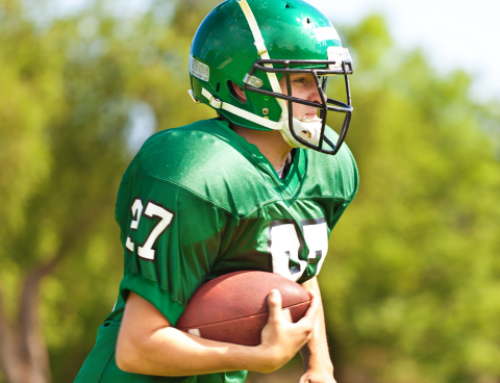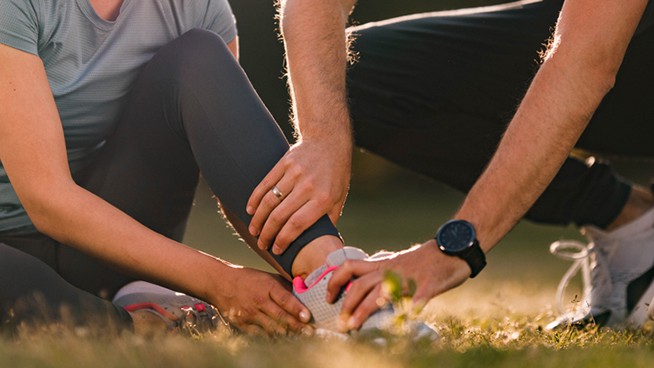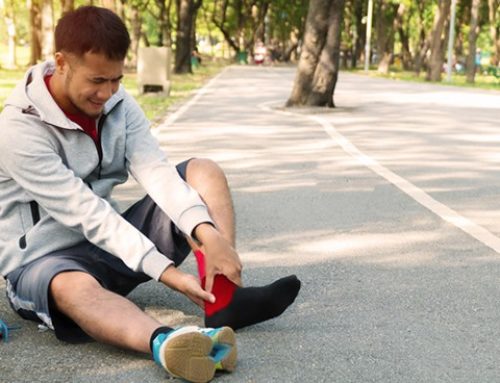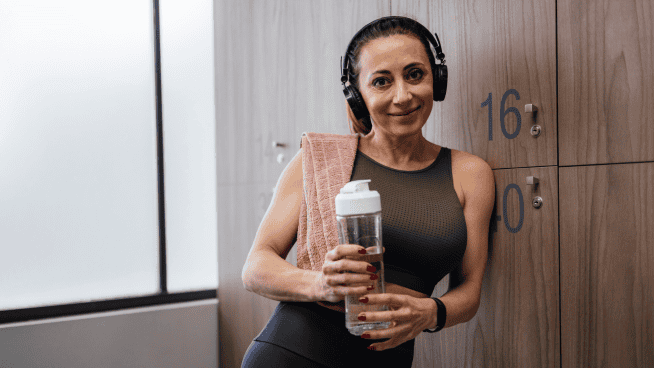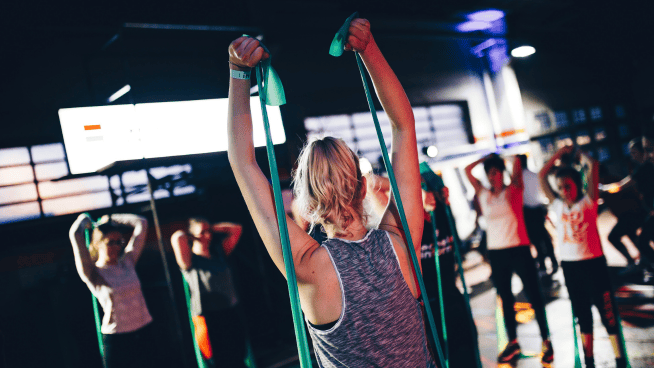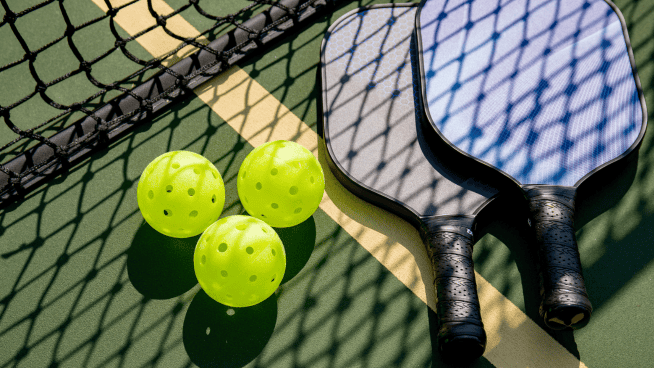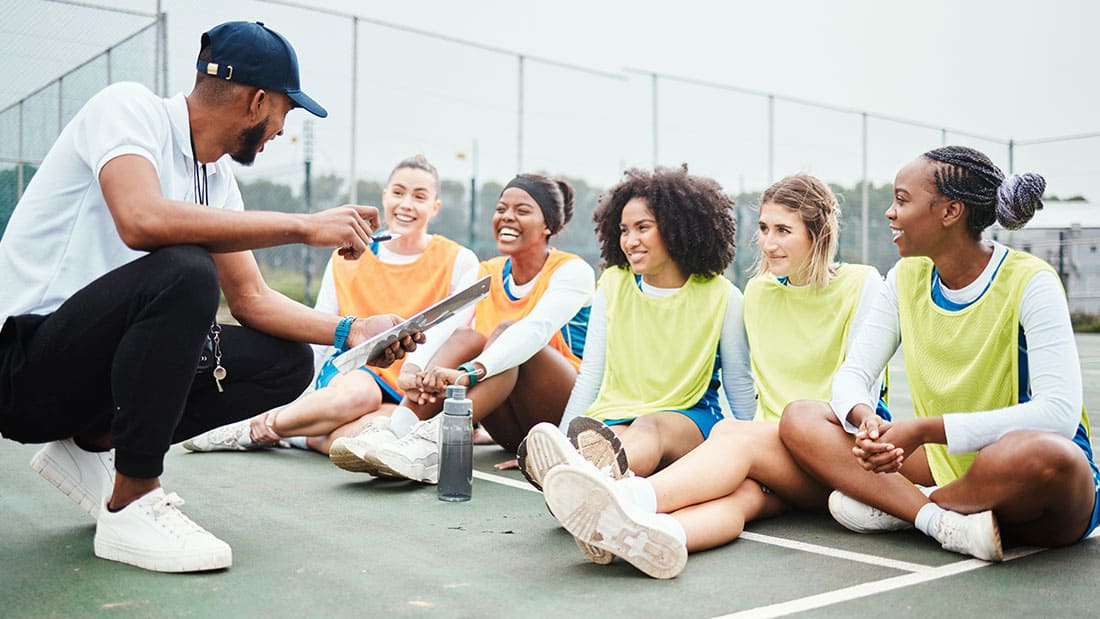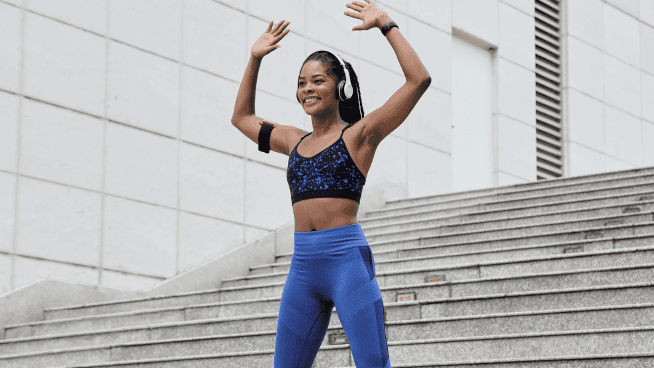Prevent Knee Injuries With This Unique Resistance Band Training Method
Resistance bands are frequently used for accommodating resistance in many training programs. Mini-bands are typically used around the legs with exercises like Squats, Deadlifts and Side Steps to help with glute activation.
At Cressey Sports Performance, resistance bands are also used for medial band pulls to help prevent knee injuries. This way, bands can be used on some accessory exercises, just like mini-bands are used with Squats and Deadlifts. Examples of accessory exercises where bands can be used include Lunges and Split Squats.
Let’s look at how and why these are used.
Medial Band Pulls
A Medial Band Pull refers to using a resistance band, either attached to a pole or held by a partner, to pull the stable leg in a Step-Up, Lunge or Single-Leg RDL medially. The band rests on the lateral side of the stable knee, creating a valgus force by trying to force the knee to cave in throughout the exercise. Because of this, the glute muscles must activate more than they would in a typical Step-Up, Lunge or Single-Leg RDL to prevent the stable knee from caving in.
Two common exercises where I implement this are shown in the video above—the Offset Reverse Lunge with Medial Band Pull and the Offset Step-Up with Medial Band Pull. In addition to the band pulling medially, the kettlebell sitting in an offset position acts as an extra counterbalance affecting stability.
Adding glute activation throughout a program is a great benefit of using bands. Paige (the athlete in the video) previously suffered an ACL tear. She mentioned that these exercises were much like her physical therapy, focusing on the mobility and stability of her knee throughout. So they can help people who have suffered knee injuries.
Hypermobility
According to Scientific American, hypermobility affects 20 percent of the population. Hypermobile people sit into hyperextension at the knee and elbow joints and may unintentionally drive into hyperextension in many exercises at a lockout point. Adding a band to exercises like Lunges, Split Squats, Single-Leg Deadlifts, and even Hanging Band Technique Bench Press provides an external cue that helps hypermobile people avoid moving into hyperextension.
Though the main point of the band on lower-body exercises is to help engage the glutes, the ability to add an extra external cue for hypermobile people is a great benefit to both coaches and athletes. It should help with coaching the lockout phase of lifts, since it requires one less necessary coaching cue. For athletes, it should make exercises easier, because it provides one less potential problem to think about throughout lifts.
With both hypermobile and non-hypermobile populations, resistance bands should be added in programs, because they provide far more than added resistance. Have fun playing with bands to see all that can be accomplished with them, and feel free to follow me on Instagram and Twitter to see more exercises you can add to your regimen.
READ MORE:
[cf]skyword_tracking_tag[/cf]RECOMMENDED FOR YOU
MOST POPULAR
Prevent Knee Injuries With This Unique Resistance Band Training Method
Resistance bands are frequently used for accommodating resistance in many training programs. Mini-bands are typically used around the legs with exercises like Squats, Deadlifts and Side Steps to help with glute activation.
At Cressey Sports Performance, resistance bands are also used for medial band pulls to help prevent knee injuries. This way, bands can be used on some accessory exercises, just like mini-bands are used with Squats and Deadlifts. Examples of accessory exercises where bands can be used include Lunges and Split Squats.
Let’s look at how and why these are used.
Medial Band Pulls
A Medial Band Pull refers to using a resistance band, either attached to a pole or held by a partner, to pull the stable leg in a Step-Up, Lunge or Single-Leg RDL medially. The band rests on the lateral side of the stable knee, creating a valgus force by trying to force the knee to cave in throughout the exercise. Because of this, the glute muscles must activate more than they would in a typical Step-Up, Lunge or Single-Leg RDL to prevent the stable knee from caving in.
Two common exercises where I implement this are shown in the video above—the Offset Reverse Lunge with Medial Band Pull and the Offset Step-Up with Medial Band Pull. In addition to the band pulling medially, the kettlebell sitting in an offset position acts as an extra counterbalance affecting stability.
Adding glute activation throughout a program is a great benefit of using bands. Paige (the athlete in the video) previously suffered an ACL tear. She mentioned that these exercises were much like her physical therapy, focusing on the mobility and stability of her knee throughout. So they can help people who have suffered knee injuries.
Hypermobility
According to Scientific American, hypermobility affects 20 percent of the population. Hypermobile people sit into hyperextension at the knee and elbow joints and may unintentionally drive into hyperextension in many exercises at a lockout point. Adding a band to exercises like Lunges, Split Squats, Single-Leg Deadlifts, and even Hanging Band Technique Bench Press provides an external cue that helps hypermobile people avoid moving into hyperextension.
Though the main point of the band on lower-body exercises is to help engage the glutes, the ability to add an extra external cue for hypermobile people is a great benefit to both coaches and athletes. It should help with coaching the lockout phase of lifts, since it requires one less necessary coaching cue. For athletes, it should make exercises easier, because it provides one less potential problem to think about throughout lifts.
With both hypermobile and non-hypermobile populations, resistance bands should be added in programs, because they provide far more than added resistance. Have fun playing with bands to see all that can be accomplished with them, and feel free to follow me on Instagram and Twitter to see more exercises you can add to your regimen.
READ MORE:

